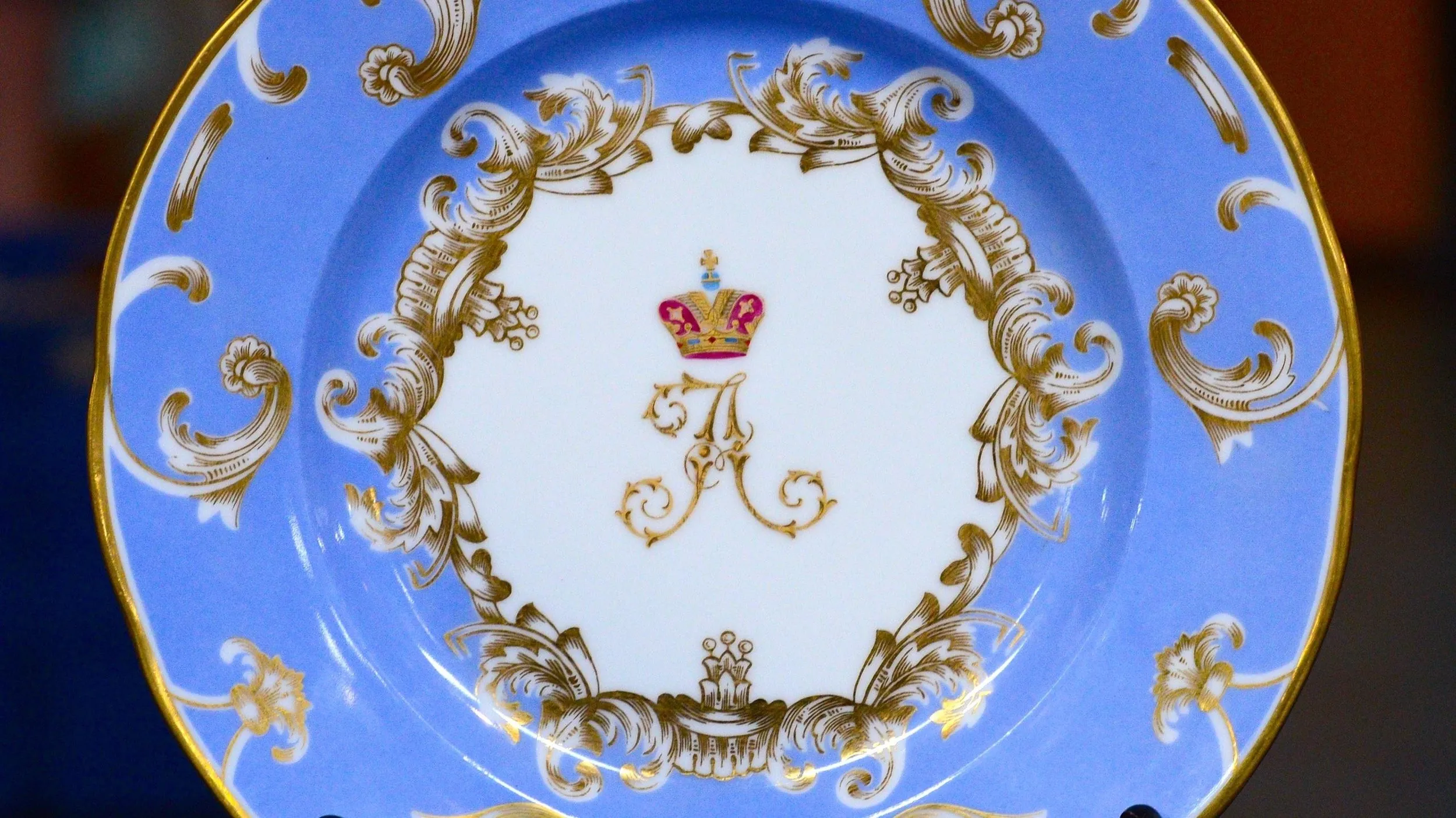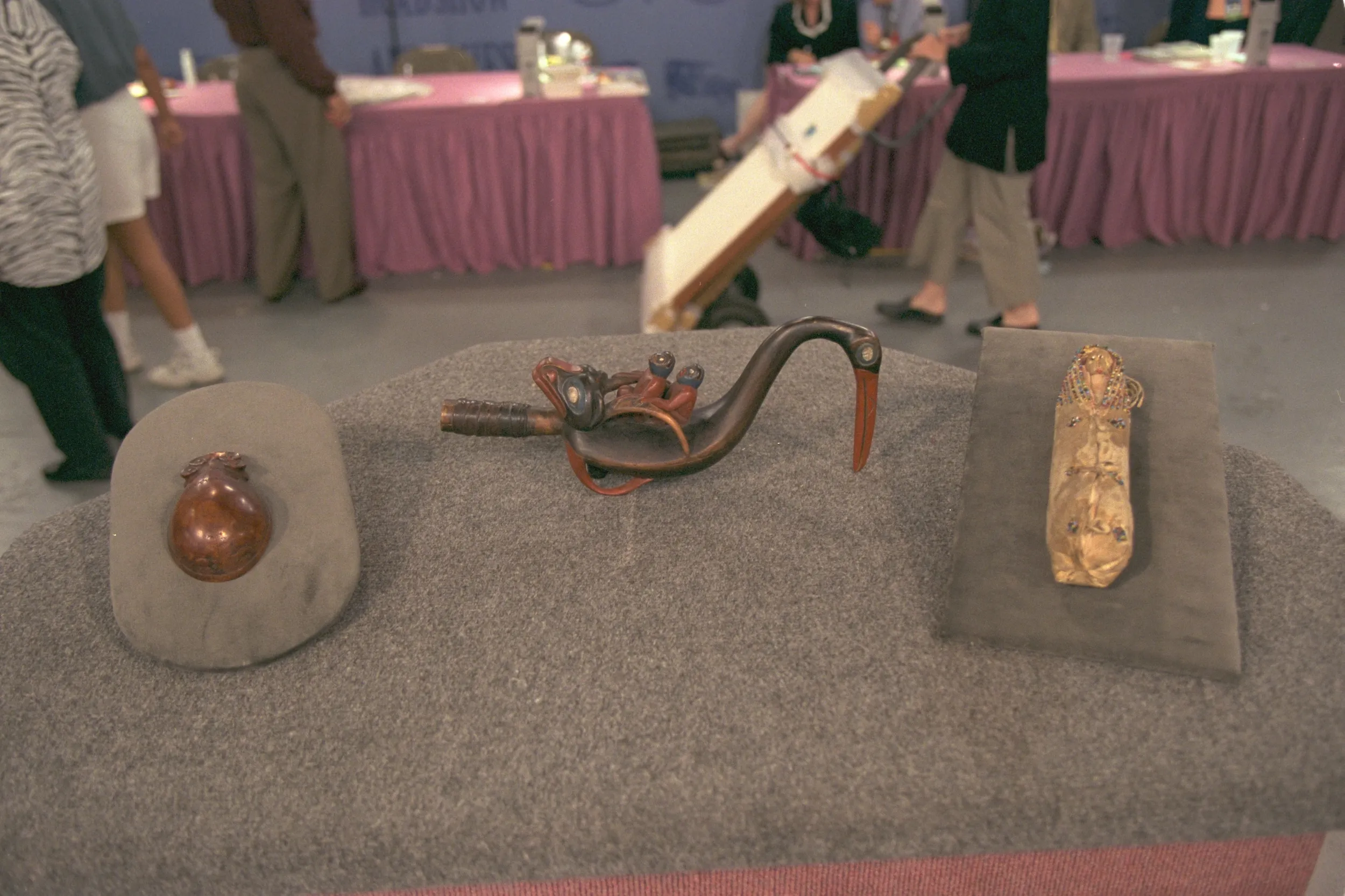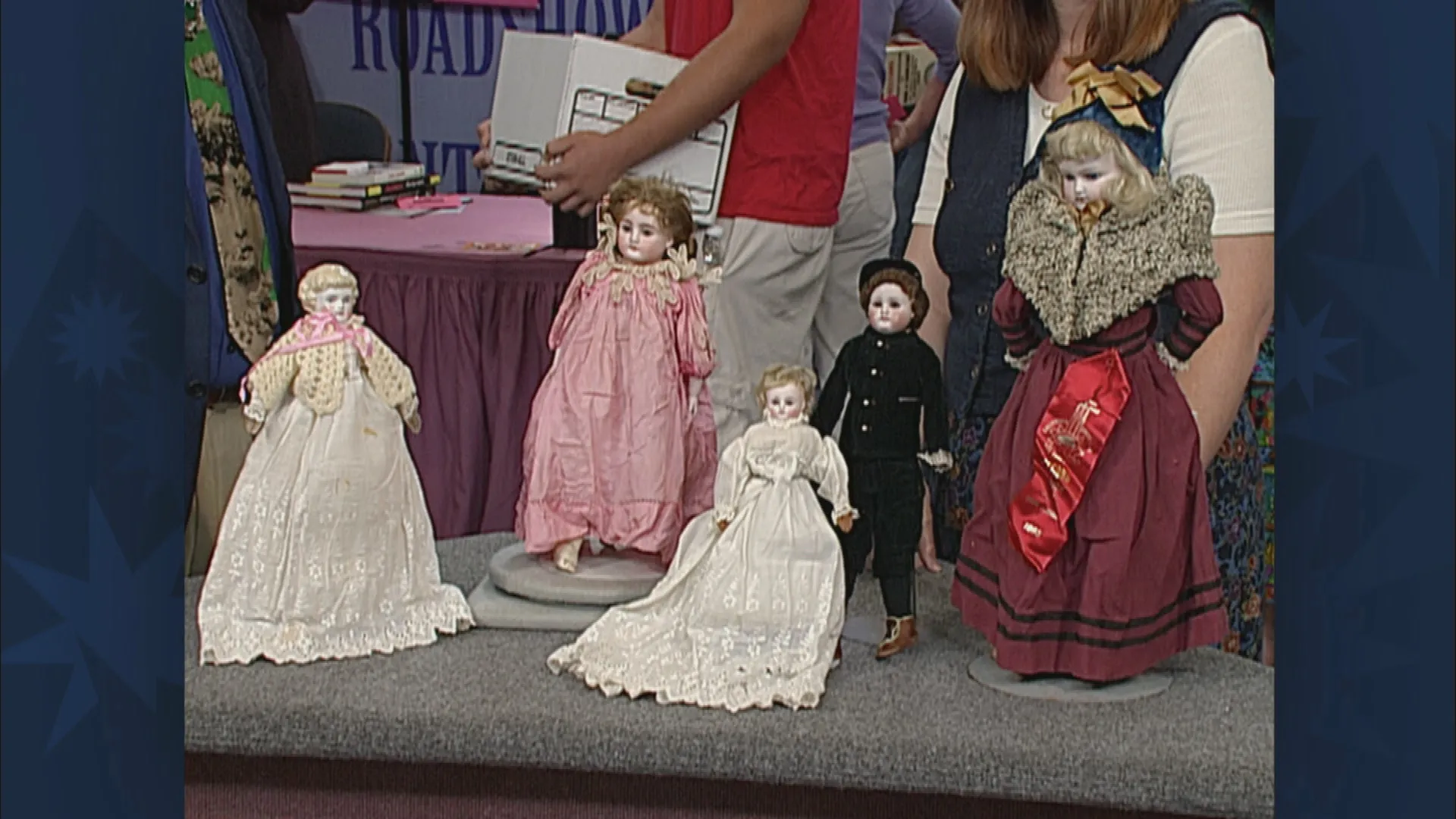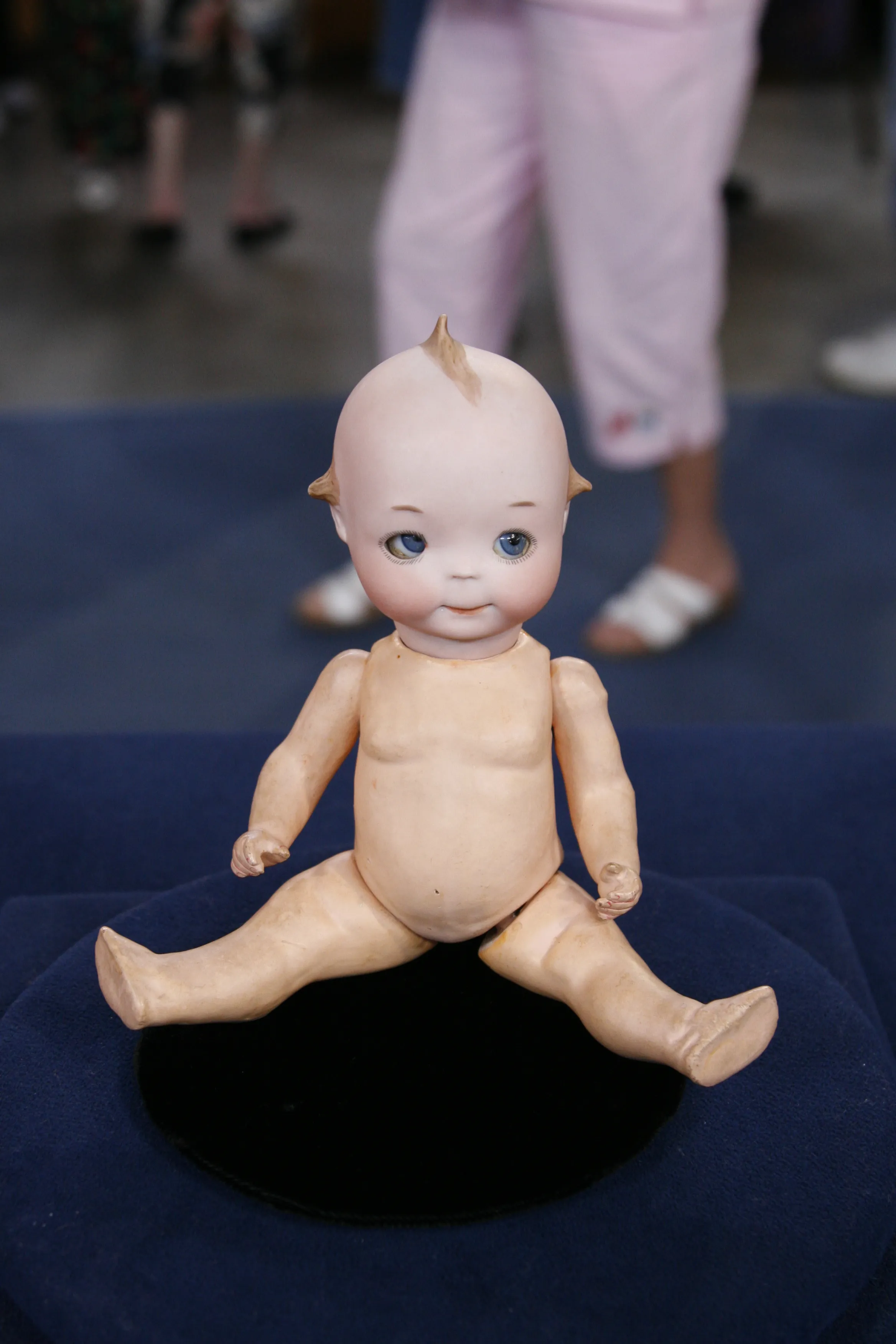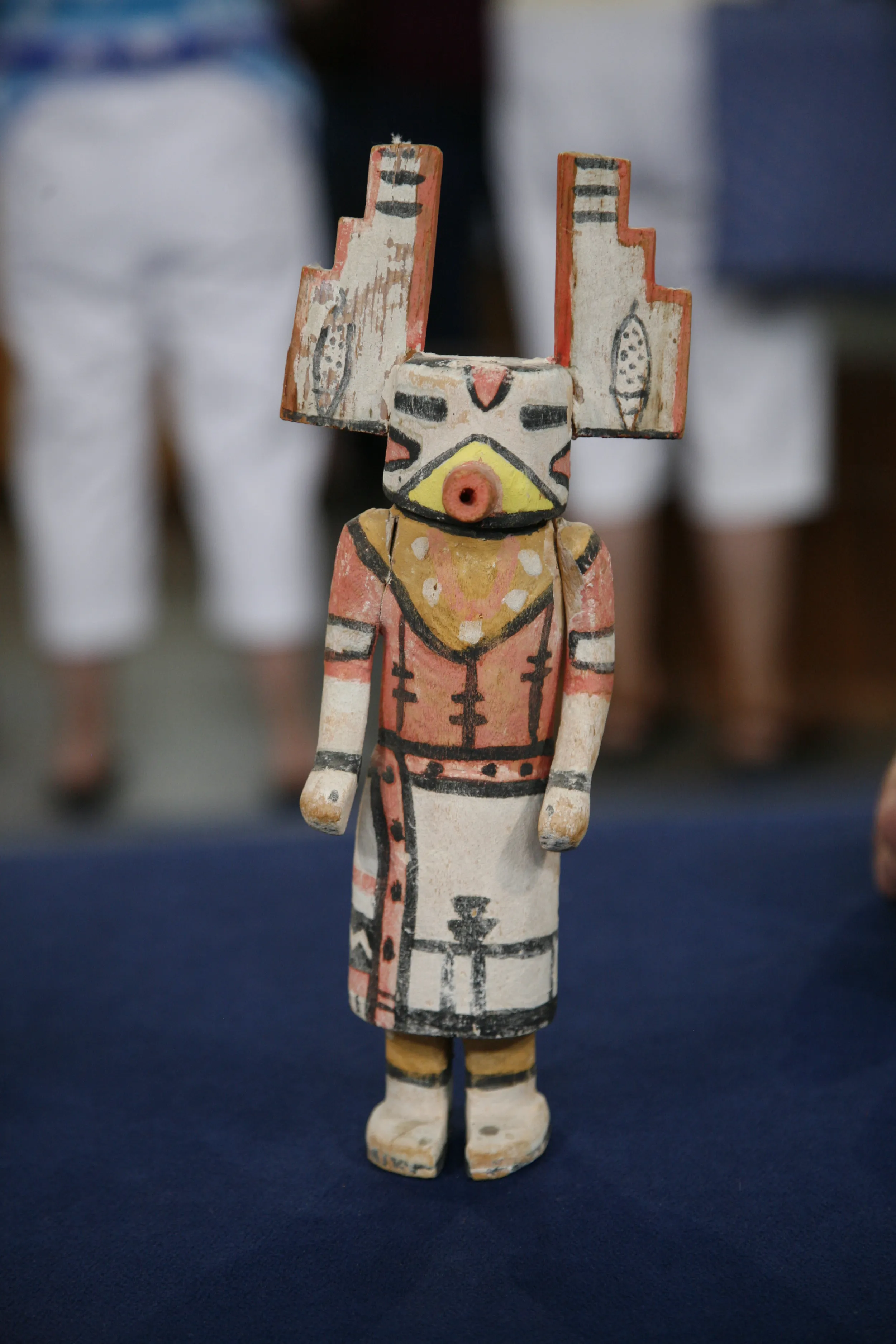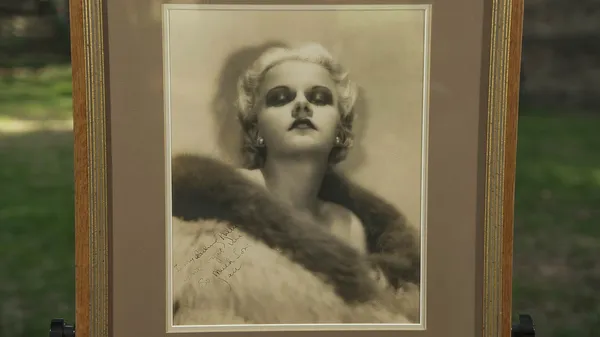GUEST: My great-grandmother brought it over on a ship from France, late 1800s, early 1900s. Of course, my grandmother had it and then my mother, and it was passed down to me. I know it's got human hair, the pierced ears. I guess it's porcelain-faced, isn't it?
APPRAISER: Yes, it is. Did it have clothes when you got it?
GUEST: It had pantaloons and a slip. And my mother had a new outfit made for it.
APPRAISER: This is a Jumeau doll from Paris. They made dolls from 1842 up until about 1898. These dolls were the best quality French dolls. It has a human hair wig, and also the coloring of the bisque, the contrast between the paleness and the rosiness in the cheeks. And it's a very early model. It has a papier-machÈ body, eight ball joints, which denotes that it's a lot older. It's very desirable because of the blue paperweight eyes.
GUEST: Oh.
APPRAISER: Any doll collector would love this. If you compare dolls to jewelry, you would think that this would be like a piece of Tiffany to a doll collector because it's really a great example. On the back of the head, there's a size number. Size number 11, which denotes it's a 24 inch. Most of the earlier models like this weren't marked on the head. They were either marked on the clothes or on the body. And you can see the Jumeau mark here.
GUEST: Right.
APPRAISER: If you look at the bisque head, also, you'll notice that it has pierced ears. The ears are also applied. They were put on after the doll has been molded. And the earrings look to be original. They're little glass balls. You see some damage around on the body.
GUEST: Right.
APPRAISER: It doesn't hurt the value at all. It's just typical wear and tear.
GUEST: Yeah.
APPRAISER: Today at auction, this doll would bring between $16,000 and $18,000.
GUEST: Wow.
APPRAISER: Yeah. And if you had the original clothes, you could add another 20% to that.
GUEST: Oh, really? Wow.

